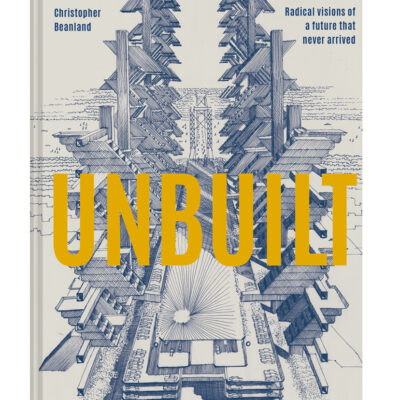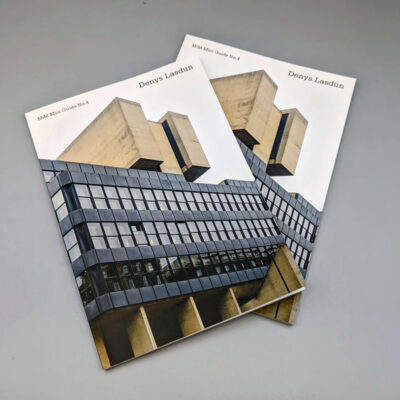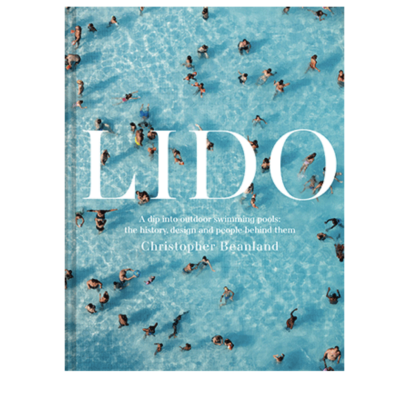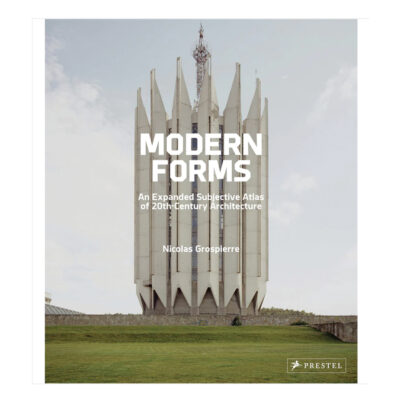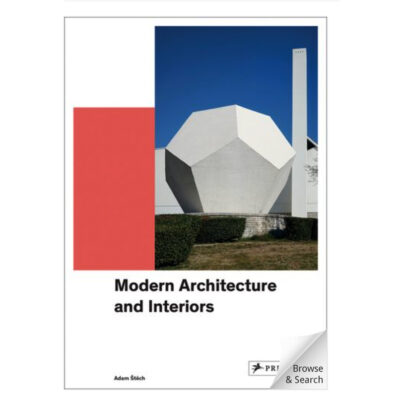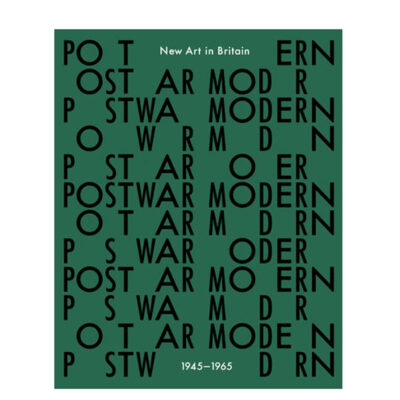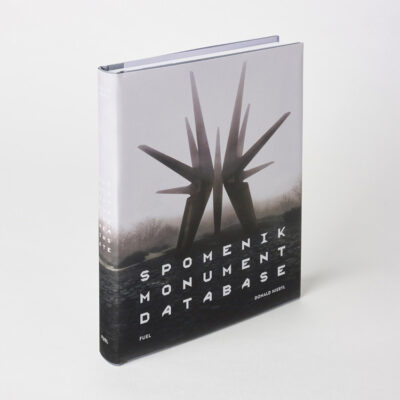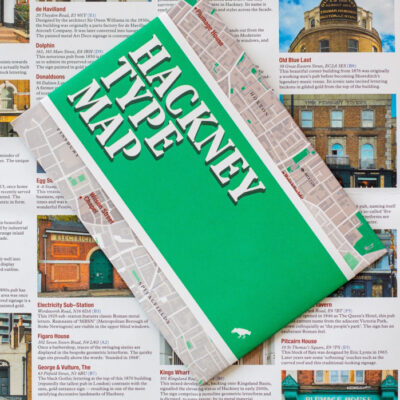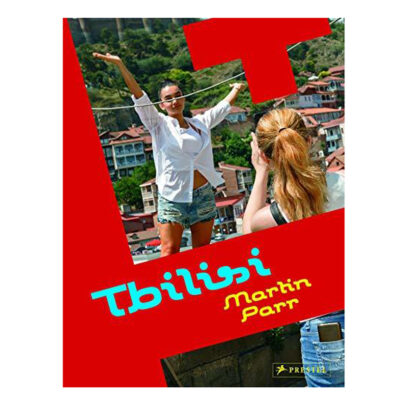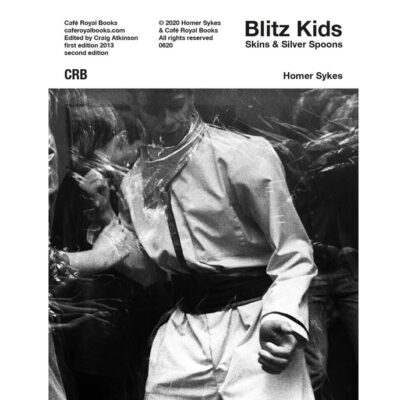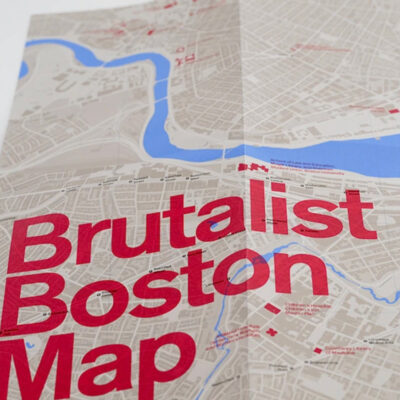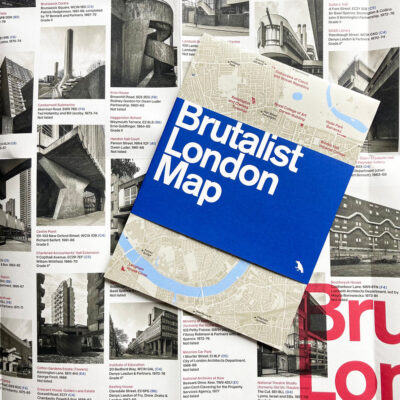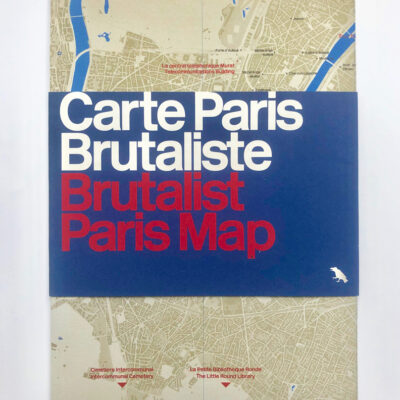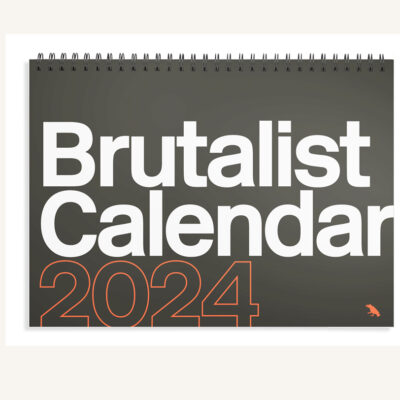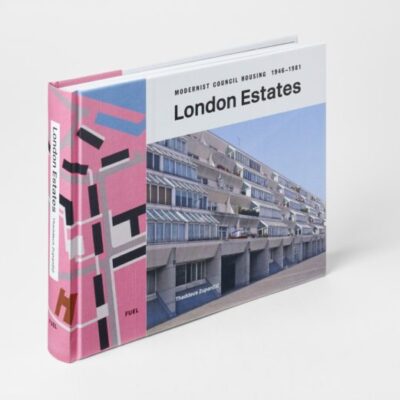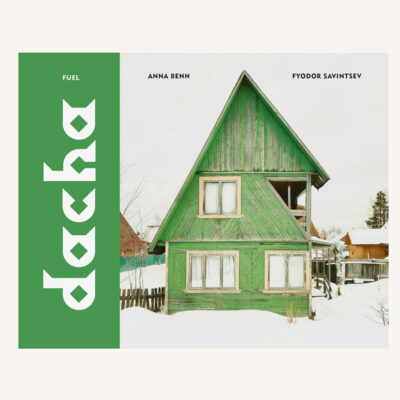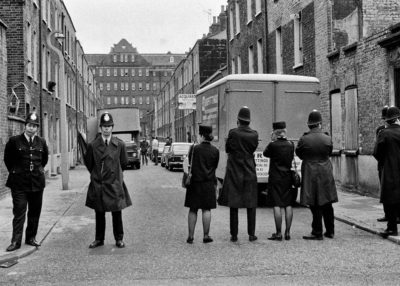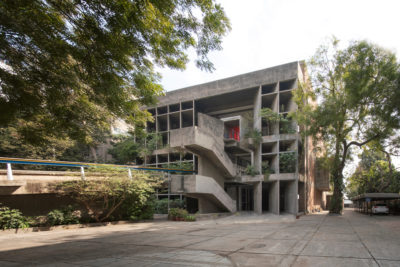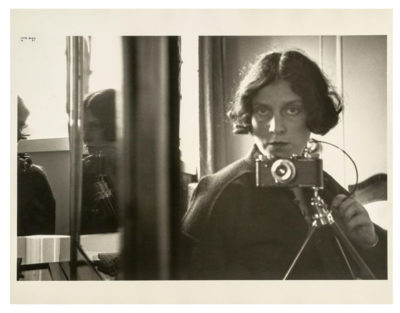Exploring Photographer
Philippe Calandre’s Chimeric Cityscapes
French artist, Philippe Calandre is an expert of the uncanny. For nearly three decades, he’s used his camera and paintbrush to manipulate familiar concrete structures to create eerie city scenes
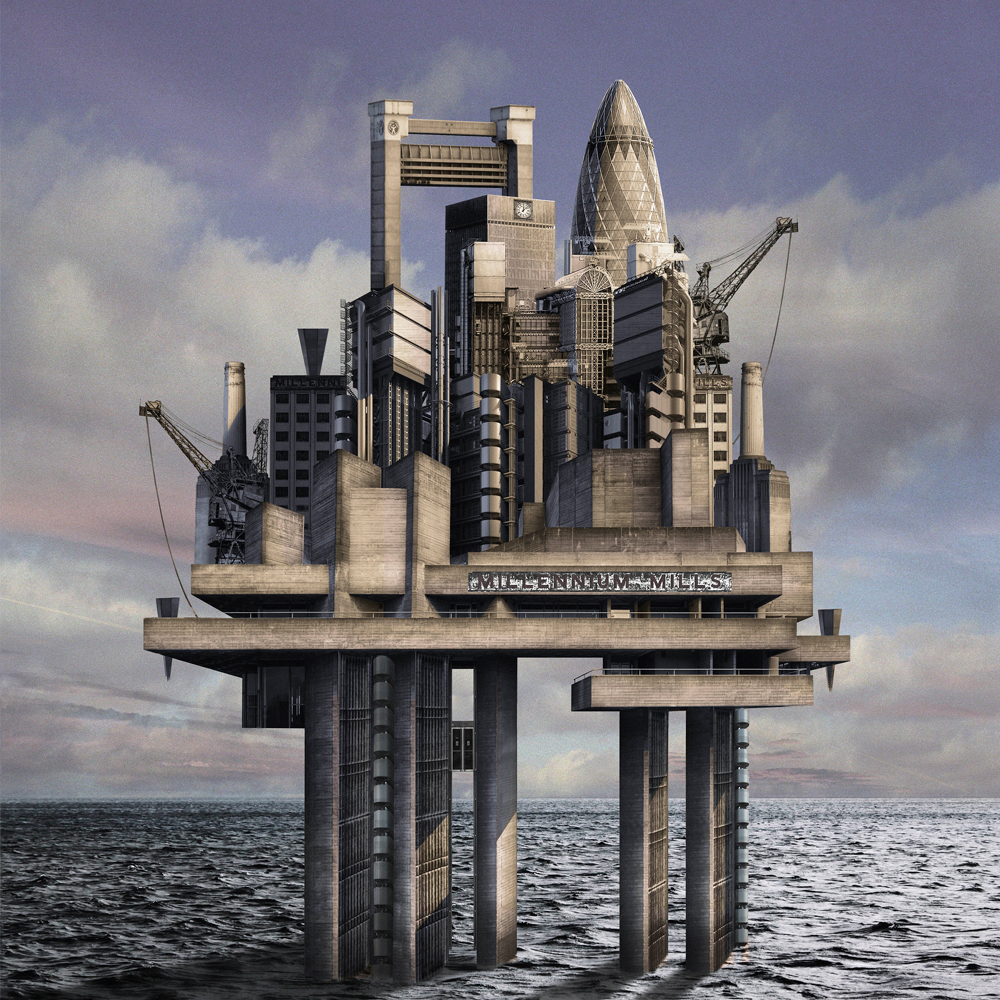
London Platform Séries “Etude”, Philippe Calandre ©
While Constructivism and Brutalism form the aesthetic backbone of Calandre’s work, it’s the ravaging effects of climate change and humanity pushed to its extremes that fuel his canvases. Through his eyes, we step into an autonomous metropolis built on floating platforms or visit urban sprawls wrecked by global warming. He explores the wastelands, abandoned and dystopian spaces with deft delicacy.
As conversations about London’s gentrification and homogenising neighbourhoods prop up dinner parties and think pieces across the city, GreyScape caught up with Calandre at Photo London Fair to hear his perspective.
Your work is very striking. Are you mapping what is already in our sight line or are these landscapes wholly imaginary?
In the series ‘London Platform’ I used iconic London architecture that is deeply rooted in the collective unconscious to create an imaginary playground. The city is always built near a river and it is an inseparable element.
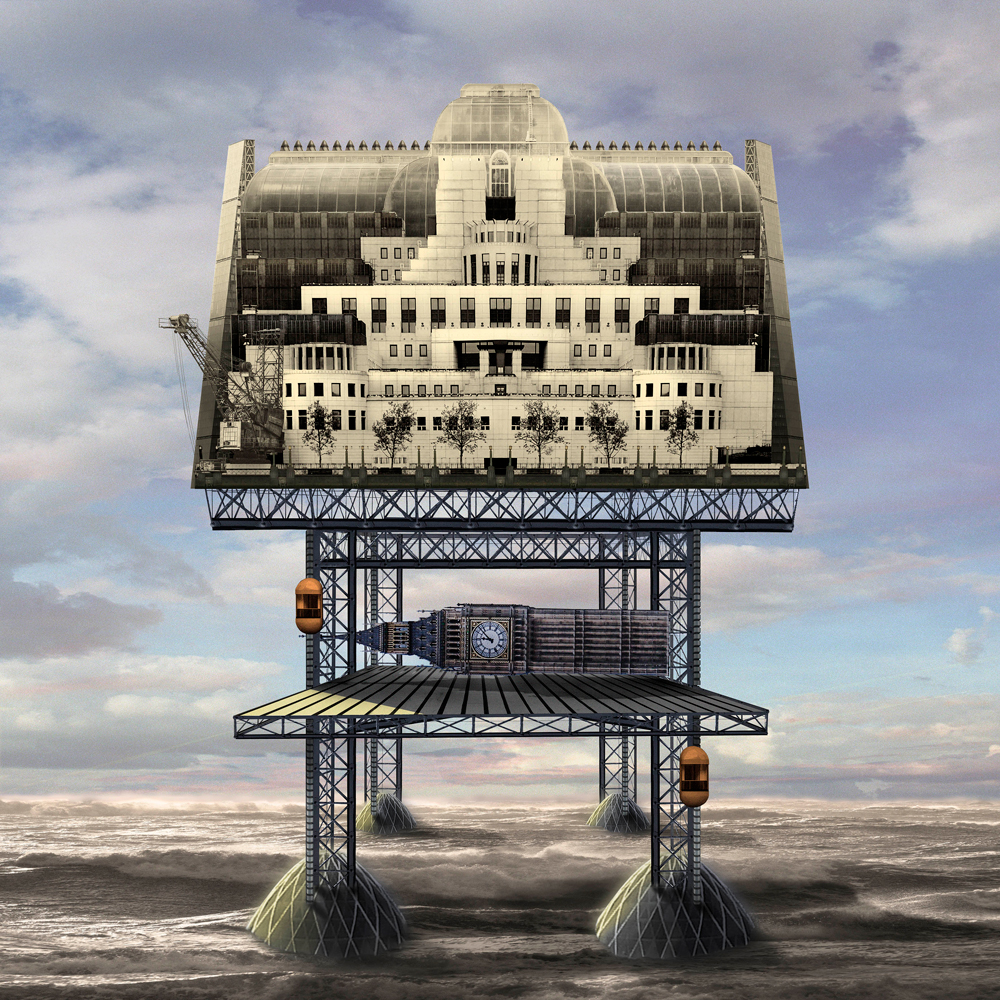
London Platform Séries, Philippe Calandre ©
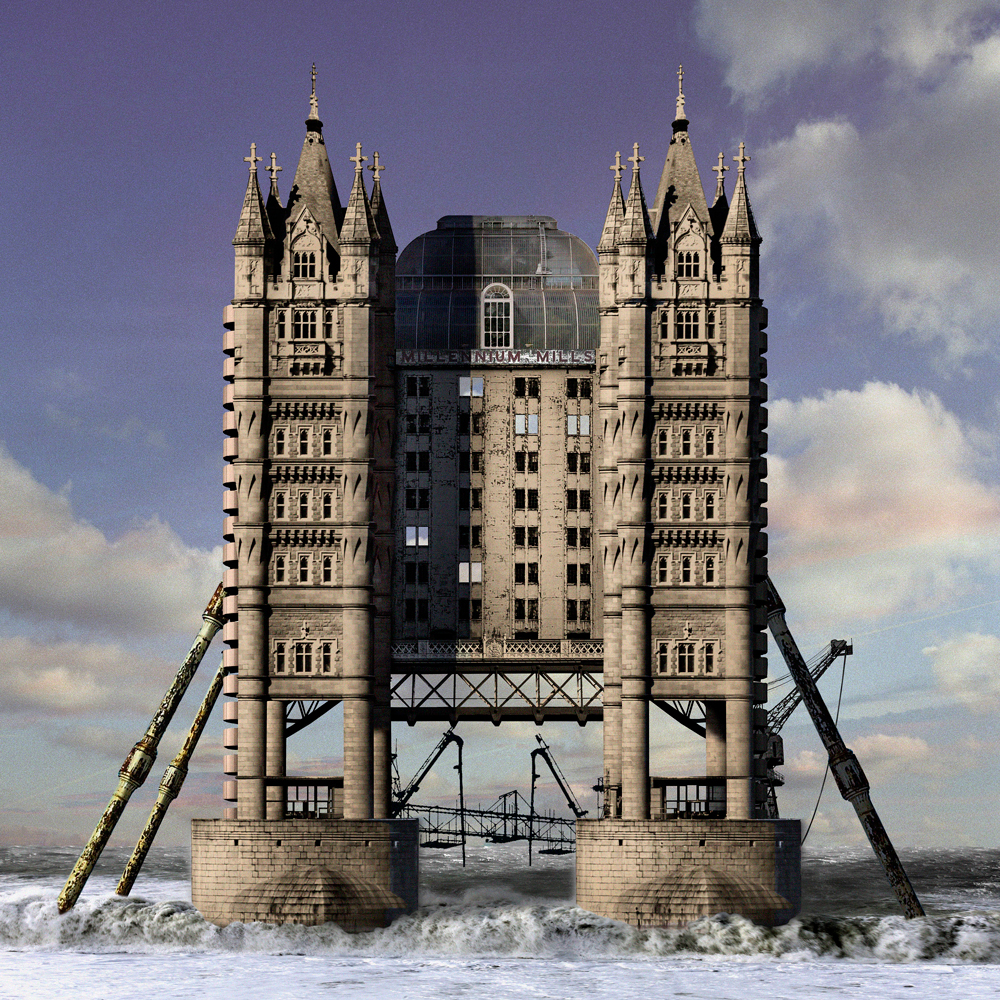
London Platform Séries, Philippe Calandra ©
Do you see yourself as an artist who uses photography or a photographer?
I was first a photographer during the film era, but technology has made the medium evolve into something new, the digital revolution has opened up this medium to other fields of application, and this technology has opened up possibilities that I didn’t have access to before, I don’t know what I am anymore.
How has the effects of climate change impacted your art?
It has pushed me to save my own fictional cities from rising waters by rebuilding them on islands or, more recently, on floating platforms.
Are there architectural styles that mean more to you than others?
Among all the styles of architecture that I appreciate, it is often the depreciated ones that I honour, the monumental architecture made of concrete and steel: Industrial, Modern, Brutalist or Constructivist.
Do you think architecture can improve people’s lives?
They have offered the greatest number of people a decent home, I adhere to this fundamental idea that it is imperative that architecture improves the life of the inhabitants.
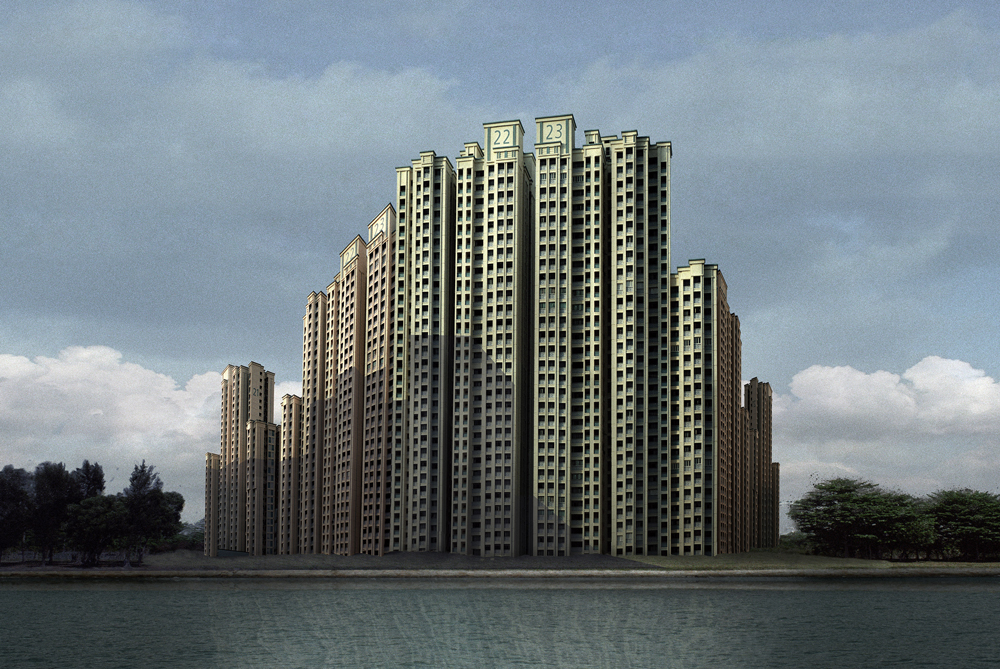
Suntec City L12, Philippe Calandre ©
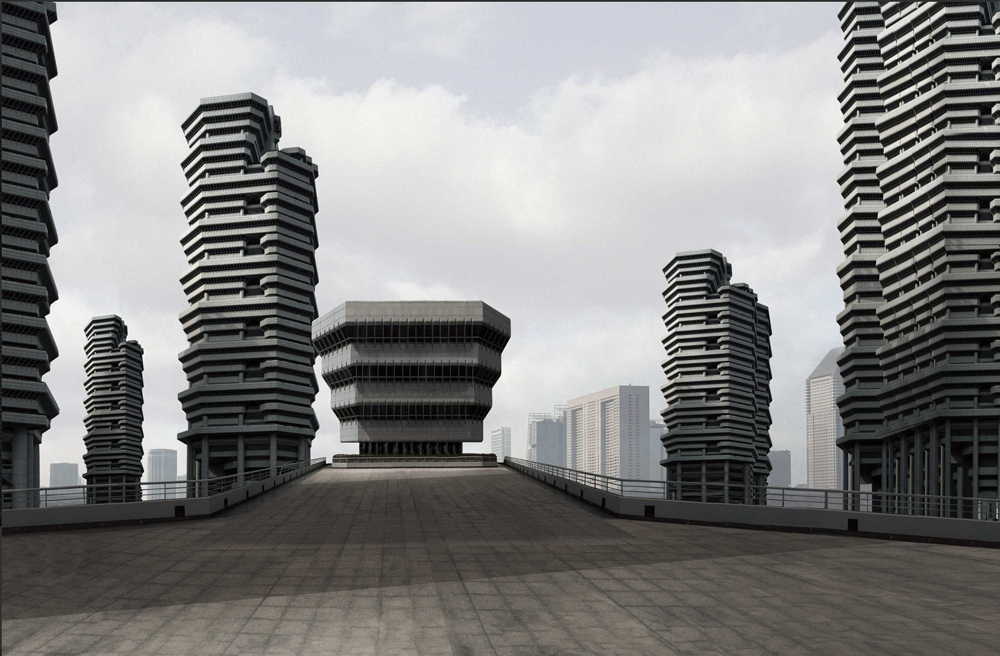
Suntec City P16, Philippe Calandre ©
Why are your photos devoid of humans?
My architectural images are devoid of human presence because that’s not the point, it’s obvious that it’s humans who have designed all the infrastructures I show, the human presence would only serve the relationship of scale as in most architectural drawings of the Italian Renaissance.
Reimagining the city has informed several of your projects. To what degree did the pandemic change your thinking?
Indeed, my images of imaginary cities are always free of human presence, which is why they remind us today of the lockdown during the pandemic. I am not a visionary, it is only a fortuitous coincidence. But I must admit that during this pandemic period and the desertification of public space, I thought that my imaginary work had been caught up and annihilated by the pandemic reality and that I would have to reinvent myself or disappear.
‘the magic of the appearance of an image in the laboratory’
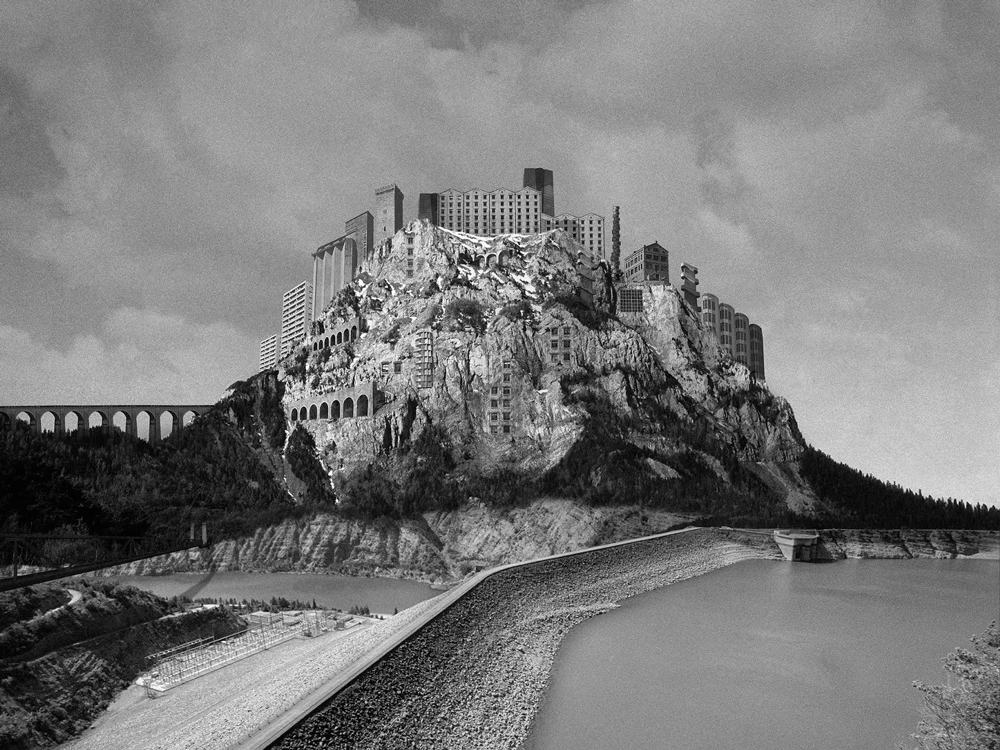
Théopolis 15, Philippe Calandre ©
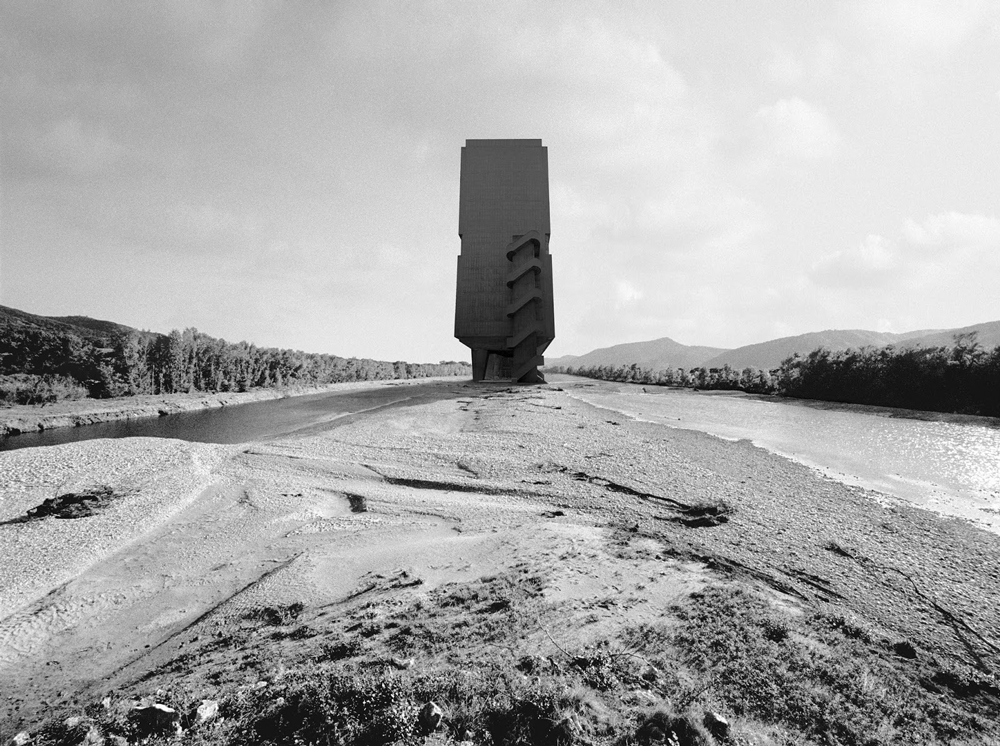
Théopolis n°6 the North face of the cité radieuse “Marseille” by Le Corbusier Philippe Calandre© 2017
Are you a storyteller?
Am I a storyteller, you ask … difficult to know who I am. I tell an inner story, an immobile journey where only my mind is wandering…
What attracted you to photography as a career?
The freedom of expression, paradoxically. The frame, the reproduction, the magic of the appearance of an image in the laboratory, and finally the journey, the discovery.
When you begin a new project where do you start, how do you choose your locations and what is your process for deciding on completing the process?
I spend a lot of time beforehand fantasising about a trip, I float the idea of a future departure.
I’m very organised before the trip. I document myself. I try to get an idea of what I’m going to find on the spot, I list the emblematic buildings, the monuments, the industrial zones and then when I arrive, I often like to get lost and discover unknown areas on the outskirts of the city.
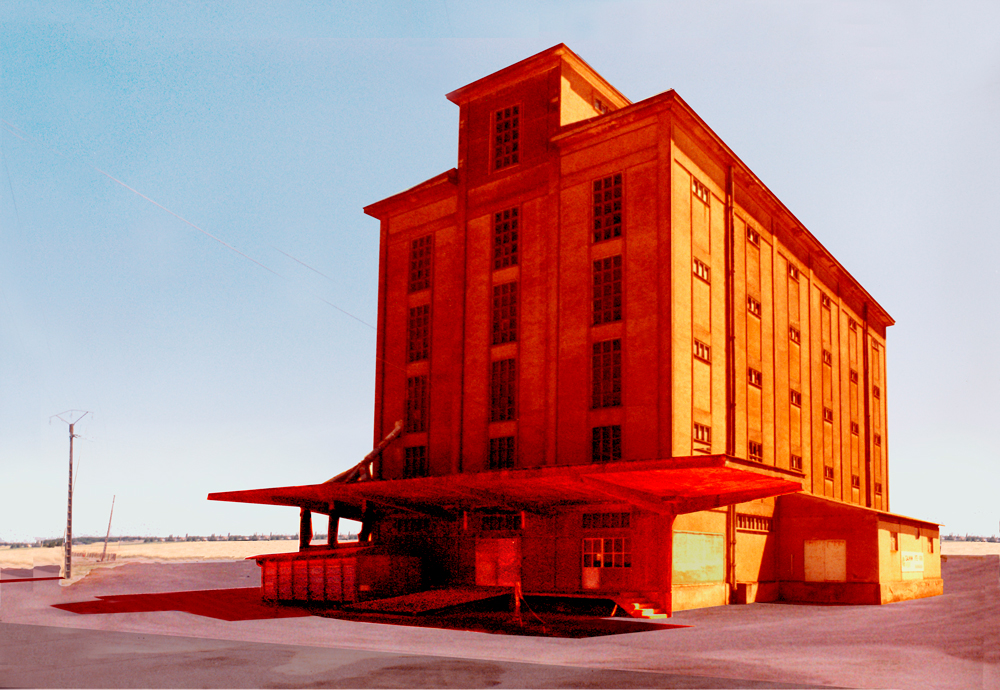
Silo 01, Philippe Calandre ©
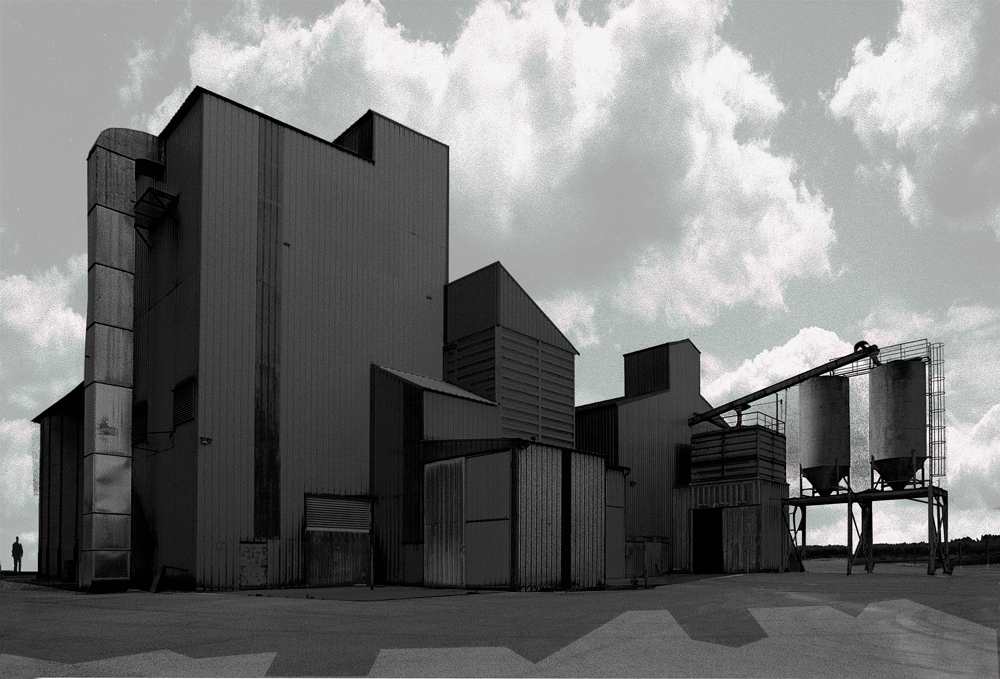
Silo 02, Philippe Calandre ©
How do you choose your colour palette?
I don’t have a well-defined colour palette, I adapt the density according to the series, I do a lot of black and white.
Do you think in terms of individual images or from the outset in, clusters?
I always think in terms of a group or series, never individual images.
‘I try above all to transport myself into an immersive illusion’
What do you hope the viewer of your photos experiences? Are you aiming for an immersive experience?
I don’t think about the viewer when I design an image, I try above all to transport myself into an immersive illusion and so much the better if the viewer can also be sensitive to it.
If you could create your own utopian city, what would it look like?
A silent, vegetal and contemplative city close to some of Giorgio de Chirico’s metaphysical paintings in which the spectator could reconnect with himself and could lose himself in order to be better free.
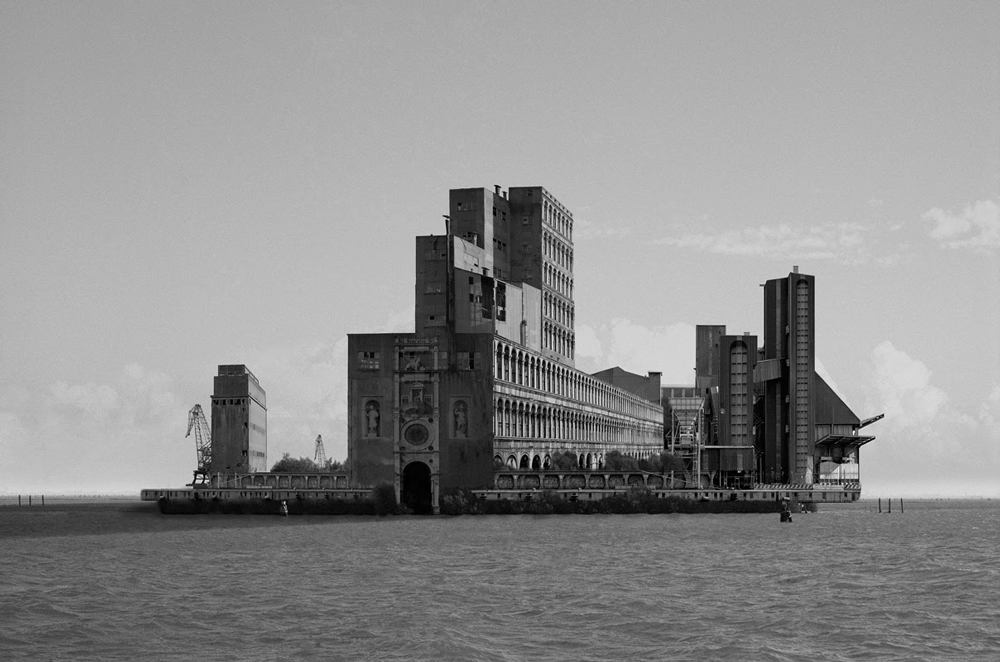
Utopie N°1, Philippe Calandre ©
What does neighbourhood mean to you?
A neighbourhood is a small village in the big city.
‘I was a sailor for two years, I learned during this experience the notion of perpetual movement’
Your biography mentions your first job was as a seaman. How much has that experience impacted your work and shaped the person you are today? Is the sea a symbol of nature untamed by humans? Is the sea benign or malign?
Yes, I was a sailor for two years, I learned during this experience the notion of perpetual movement. I also received a severe lesson in humility in the face of the elements, but also I was able to measure the unconsciousness of humans and their lack of respect for the liquid space which remains fragile, contrary to the appearances of its visible surface which seems immutable.
The sea is always benevolent, it remains uncontrollable but no less immortal, it surrounds and gives air to our spaces of life and control.
What was the ‘one’ that made it, your first commercially successful photograph?
A photo montage “UTOPIE n°6” from a series of 16 images entitled ISOLA NOVA. Intermingling antagonistic architectural typologies, one from the historical heritage and the other from the industrial heritage.
A coming and going, a visual reconciliation between Venice and Porto Marghera.
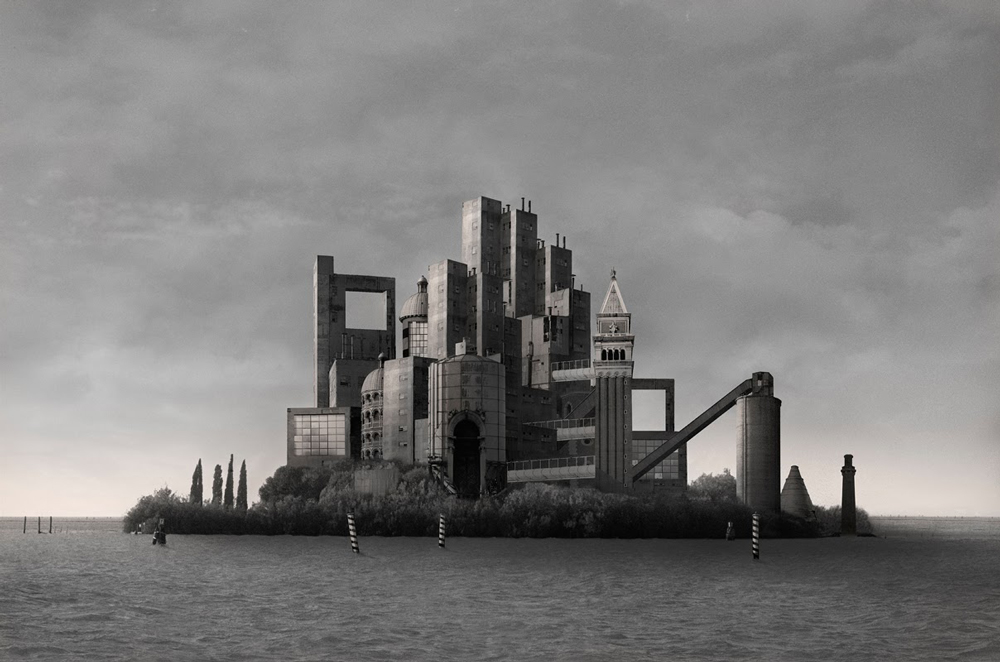
Utopia n° 6 of the séries isola Nova, Philippe Calandre© 2013 Venice, JM Wilmotte Foundation’
What was the ‘one’ that got away – a location you should have photographed?
MOSHE SAFDIE’s “Habitat 67” in Montreal and so many other places!
Which photographers inspire you?
The list is long, in chronological order; Hippolyte Bayard, Edouard Baldus, Eugène Atget, Bill Brandt, Brassaï, Lucien Hervé, Walker Evans, Pierre Molinier, Vivian Maier Francesca Woodman, Diane Arbus, Nan Goldin, Robert Mapplethorpe, Pierre Joly, Vera Cardot, Thierry Urbain, Martin Parr, Andreas Gursky, Gabriele Basilico, Bernd et Hilla Becher, Nicola Moulin, Clemens Gritl, Grégory Chatonsky.
Do you have a favourite camera and lens?
Yes my Nikon FM camera and my 18mm
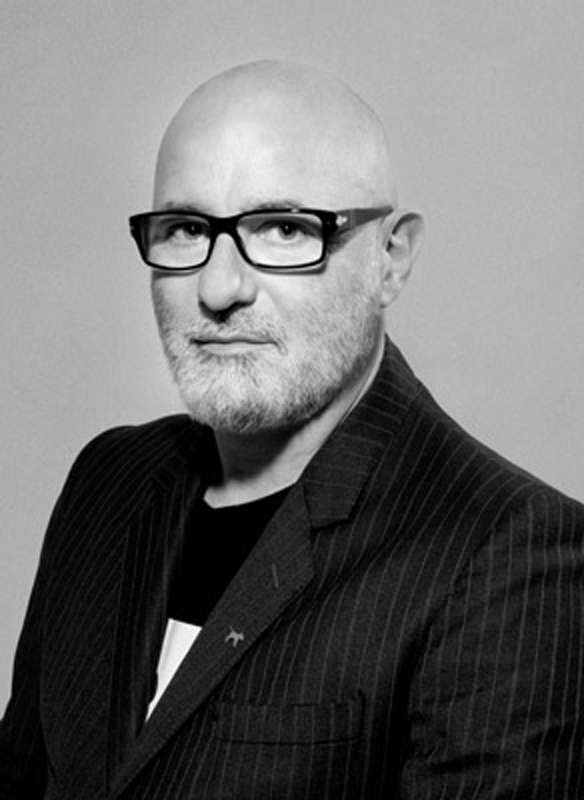
Philippe Calandre
Collections
National Fund for Contemporary Art (FNAC), Paris
Wilmotte Foundation, Venice, Italy
La Cornue SA, France
Anne Barrault Private Collection
Special private collections
Represented by Olivier Waltman Gallery Paris
All images Courtesy of Olivier Waltman Gallery
Visit Philippe’s website
On Instagram @philippecalandre




